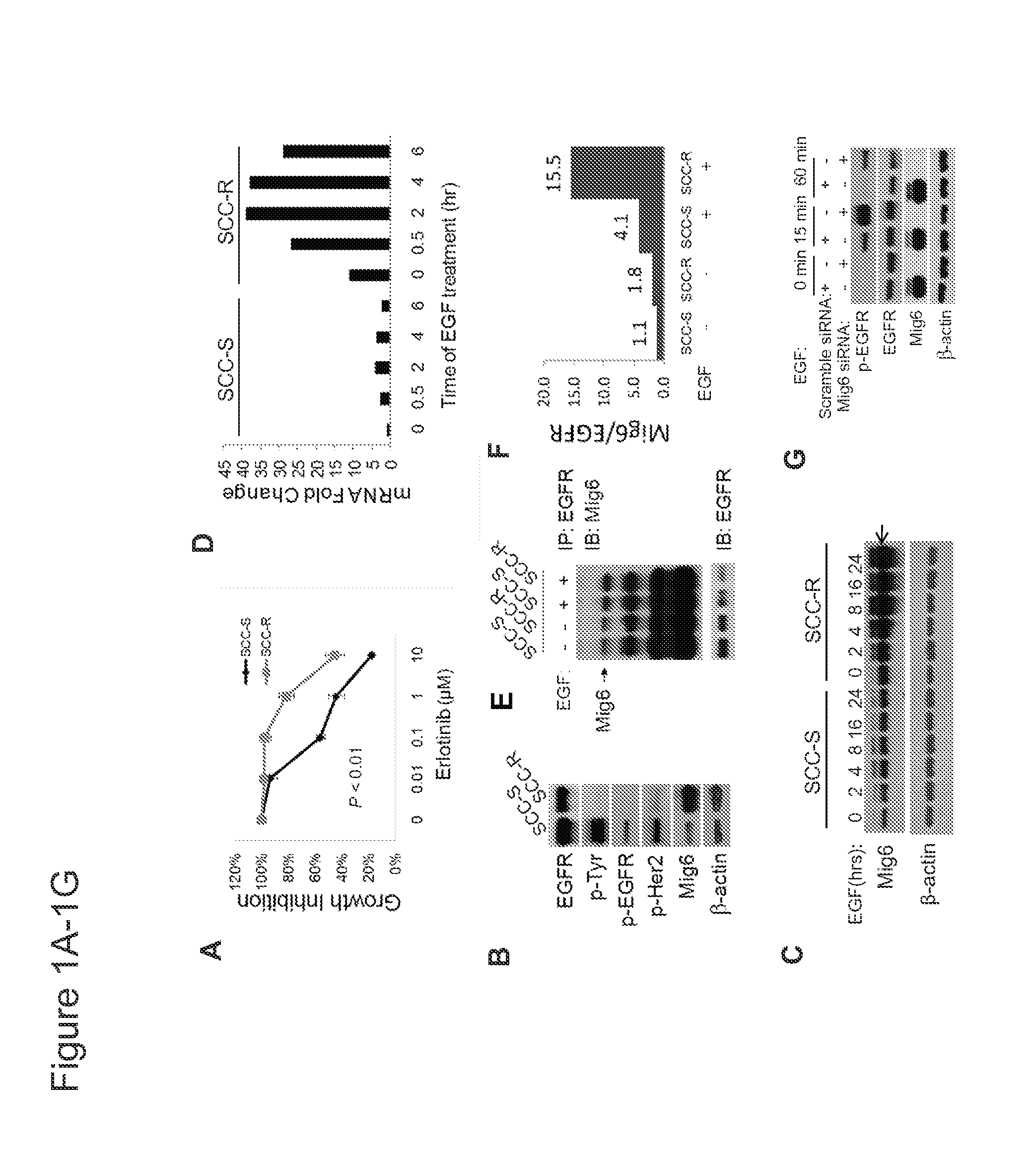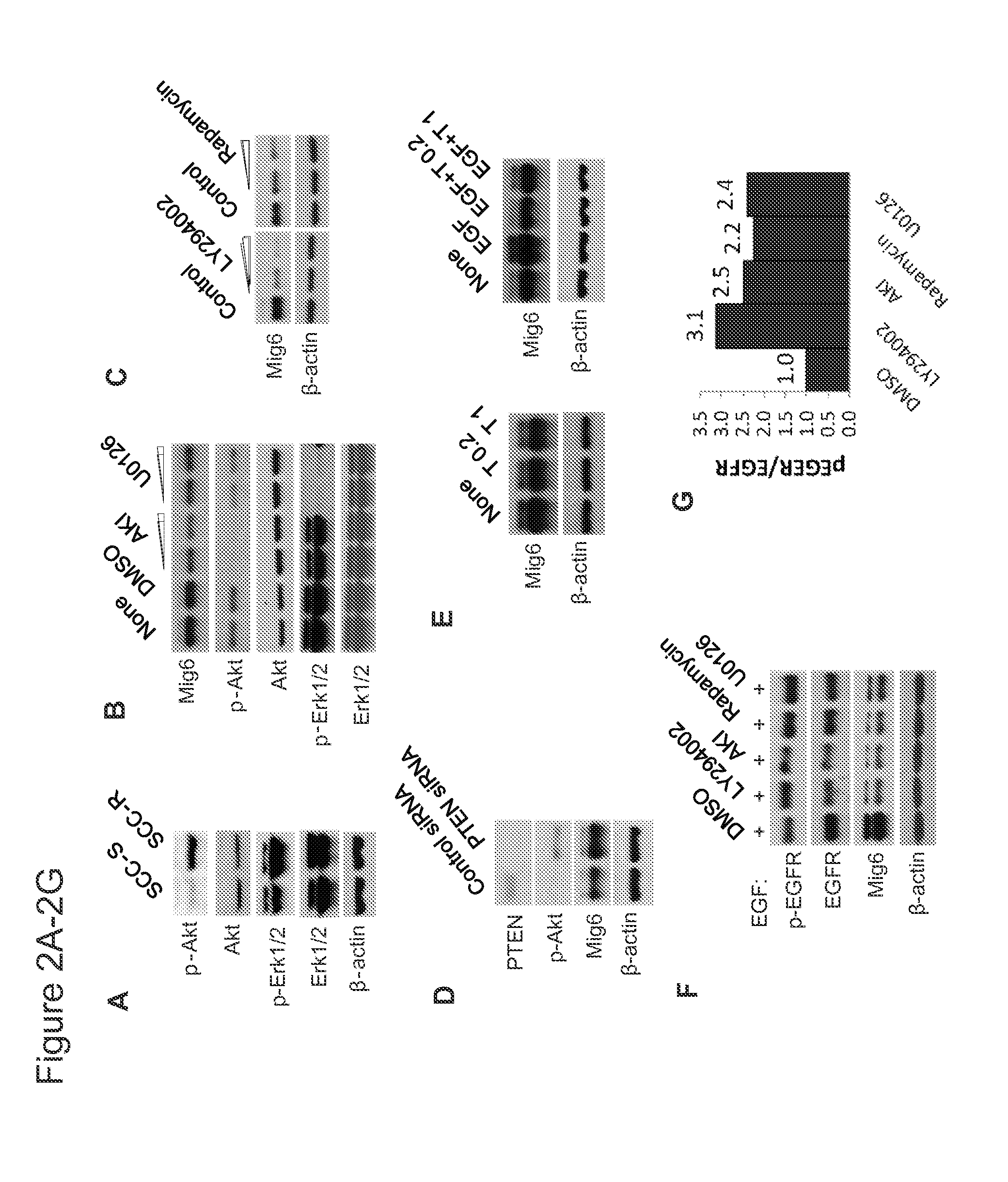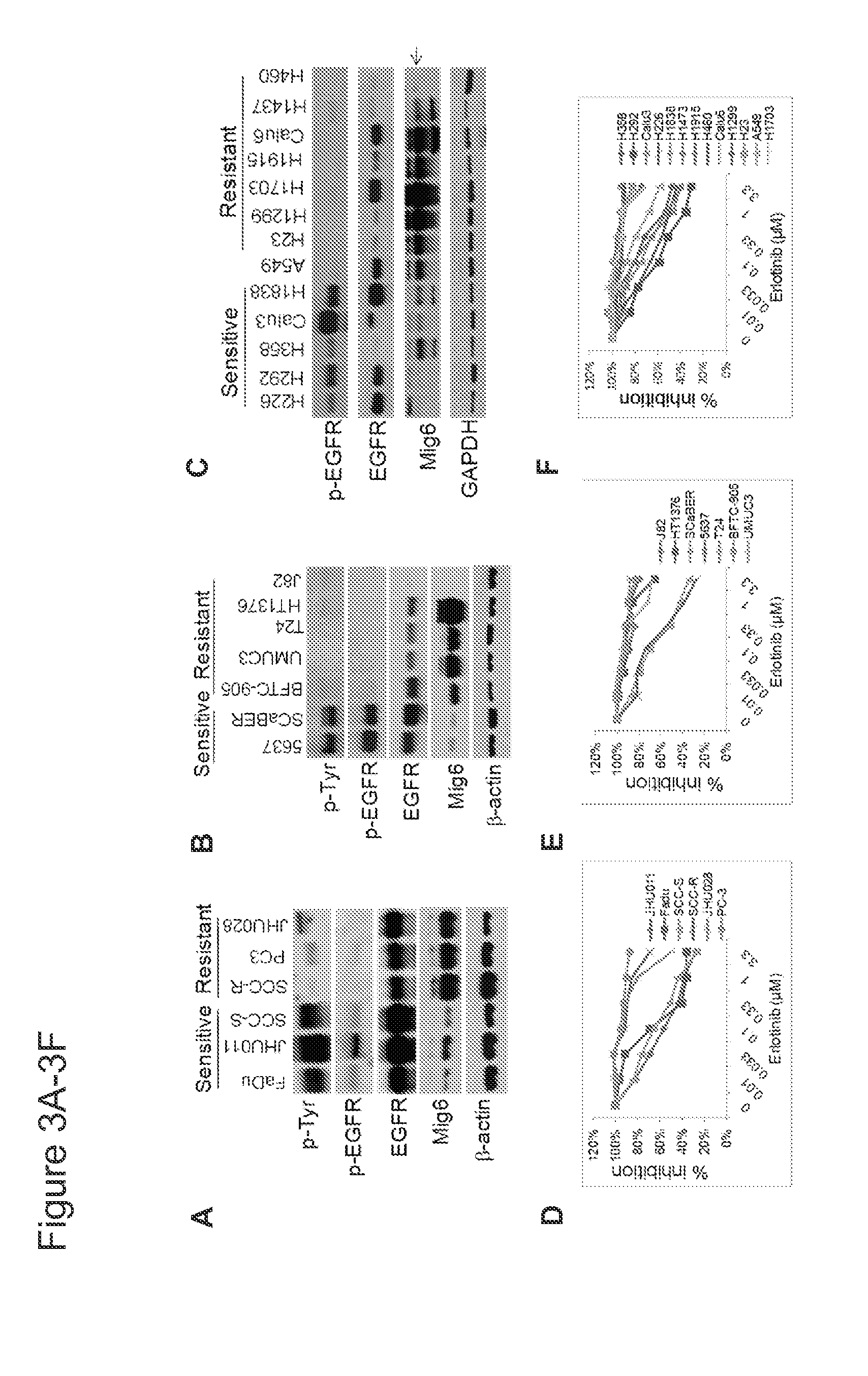Mig6 and therapeutic efficacy
a technology of mig6 and therapeutic efficacy, applied in the field of personalized medicine, can solve problems such as surprising poor relationship between the two
- Summary
- Abstract
- Description
- Claims
- Application Information
AI Technical Summary
Benefits of technology
Problems solved by technology
Method used
Image
Examples
example 1
Materials and Methods
Compounds and Reagents
[0030]Erlotinib (OSI-774, Tarceva) was purchased from Johns Hopkins University Hospital Pharmacy. LY294002 and U0126 were obtained from Cell Signaling Technology, Inc. (Beverly, Mass.). EGF was purchased from BD Pharmingen (San Diego, Calif.). All other chemicals were purchased from Sigma (St. Louis, Mo.), except where otherwise indicated. All chemicals and growth factors were dissolved in recommended vehicle as instructed by the manufacturers.
Cell Lines
[0031]The human NSCLC cell lines (H226, H292, H358, H1838, A549, Calu6, H460, H1703, H1915, H1299, Calu3, H1437, and H23), human bladder cancer cell lines (5637, SCaBER, UMUC-3, T24, HT-1376 and J82), and human head and neck squamous cell carcinoma (HNSCC) cell line FaDu were obtained from American Type Culture Collection (ATCC). BFTC-905 was obtained from German Collection of Microorganisms and Cell Cultures (Braunschweig, Germany). Cells were maintained in a humidified atmosphere containin...
example 2
Acquired Resistance to Erlotinib is Associated with Upregulation of Mig6 Expression and Decreased EGFR Activity
[0043]A possibility that is commonly overlooked is that EGFR expression may be uncoupled from its activity via negative feedback regulators of EGFR family receptor tyrosine kinases (RTKs). Among these negative regulators, the multiadaptor protein mitogen-inducible gene 6 (Mig6, also known as RALT. ERRFI1 or Gene 33), plays an important role in signal attenuation of the EGFR network by blocking the formation of the activating dimer interface through interaction with the kinase domains of EGFR and ERBB2(11-14). Mig6 knockout (Errfil− / −) mice exhibit hyperactivation of endogenous EGFR, resulting in hyperproliferation and impaired differentiation of epidermal keratinocytes. In addition, carcinogen-induced tumors in Errfil− / − mice are unusually sensitive to the EGFR TKI gefitinib (15).
[0044]Erlotinib-resistant (SCC-R) and erlotinib-sensitive (SCC-S) isogenic cell lines were gene...
example 3
Mig6 Upregulation in Erlotinib-Resistant Cells Line is Due to Activation of AKT
[0045]EGFR-independent activation of the phosphatidylinositol 3-kinase (PI3K) pathway has frequently been seen in t cells that develop resistance and is thought to confer resistance to EGFR TKIs (22, 23). We also observed that the basal phosphorylation level of AKT was higher in SCC-R cells than their sensitive counterparts (FIG. 2A). Microarray analysis revealed that multiple AKT ligands, including IGFR, PDGFR and FGFR, as well as upstream growth factor receptors, were significantly upregulated in SCC-R as compared to SCC-S cells (data not shown). It has previously been shown that Mig6 is regulated by the MEK / Erk pathway (24) and we did find higher Erk1 / 2 phosphotylation in SCC-R cells (FIG. 2A). We sought here to determine whether the PI3K pathway was also involved in regulating the basal expression level of Mig6 in SCC-R cells. Treatment of SCC-R cells with either an AKT1 / 2 kinase inhibitor (AKI) or a ...
PUM
| Property | Measurement | Unit |
|---|---|---|
| concentrations | aaaaa | aaaaa |
| tumor resistance | aaaaa | aaaaa |
| resistance | aaaaa | aaaaa |
Abstract
Description
Claims
Application Information
 Login to View More
Login to View More - R&D
- Intellectual Property
- Life Sciences
- Materials
- Tech Scout
- Unparalleled Data Quality
- Higher Quality Content
- 60% Fewer Hallucinations
Browse by: Latest US Patents, China's latest patents, Technical Efficacy Thesaurus, Application Domain, Technology Topic, Popular Technical Reports.
© 2025 PatSnap. All rights reserved.Legal|Privacy policy|Modern Slavery Act Transparency Statement|Sitemap|About US| Contact US: help@patsnap.com



